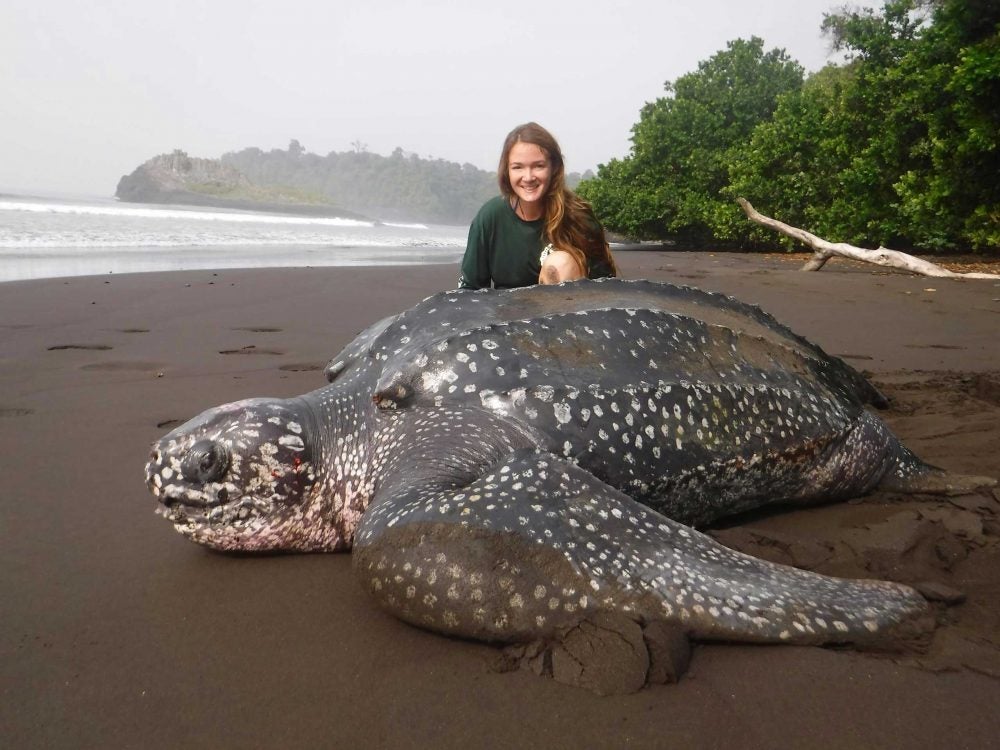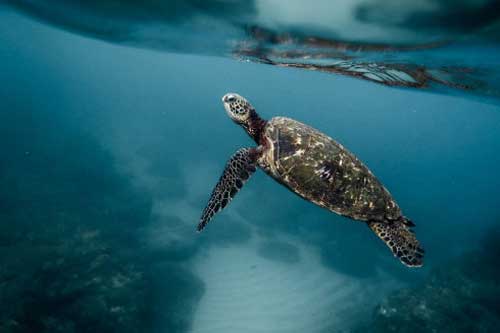
The first indication of the creature’s approach—and the event that would change Callie Veelenturf’s life—was a large, looming shadow.
Callie Veelenturf ’14 was snorkeling at a coral reef in Hawaii. She turned to see a 400-pound green sea turtle eyeing her as it swam just a few feet away. “It looked into my eyes—and into my soul—and I knew immediately that I wanted to study marine biology and especially sea turtles,” Veelenturf said.
In the five years since Veelenturf graduated with a degree in marine biology, she has worked in Costa Rica and St. Kitts to protect rare sea turtles, earned a master’s degree at Purdue University while studying the effect of climate change on sea turtle reproduction in West Africa, published her first scientific journal article, traveled in a deep-sea vehicle 700 feet below the ocean’s surface as part of a shark research expedition, worked for the Turtle Island Restoration Network in California, and won a photography contest sponsored by the journal Nature.
And her early-career accomplishments don’t end there. In 2019, she was named a National Geographic Explorer and a fellow of The Explorers Club, spoke at the United Nations on behalf of Youth for Wildlife Conservation, and started her own nonprofit, The Leatherback Project.
Read more about Veelenturf’s United Nations speech and her message to young conservationists.

